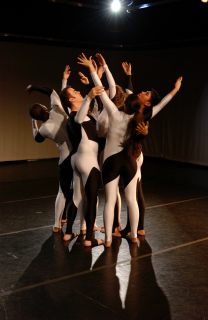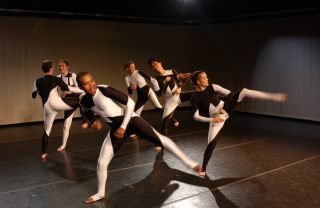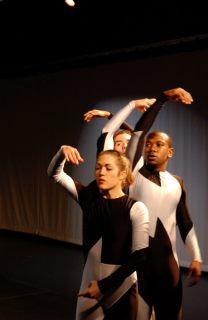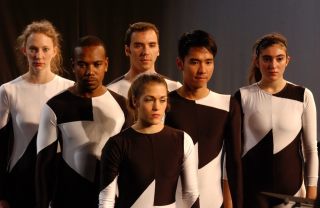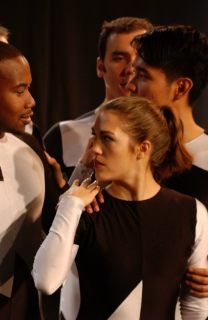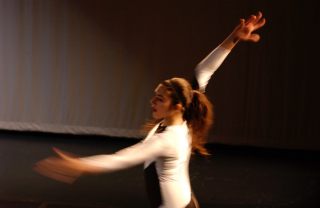| Dance | ||||||||||||||||||
| Modern Dance | ||||||||||||||||||
| Ordinal 5 | Choreographer |  |
||||||||||||||||
Brian Rotman: Mathematician, Author and Professor Emeritus at OSU Comparative Studies Pip Rhodes: Professional Lighting Designer from the UK Dan Scott: Professional Sound Designer from the UK |
||||||||||||||||||
| Venue and Dates: | ||||||||||||||||||
|
||||||||||||||||||
| About: | ||||||||||||||||||
| |
Ordinal 5 is a dance based on and representing the math equation Ordinal 5. It was conceived by Brian Rotman and choreographed by me in collaboration with the performers, sound and lighting designers. It was performed in a richly textured sound and lighting environment, as part of the International Topology Conference Embodying Transformation: A Dance and Sound Event. The 6 performers where from OSU’s Departments of Dance and Theatre, 3 were undergraduates and 3 were graduate students. The Ordinal 5 dance dynamically and beautifully made manifest the structure, action and reaction of the math equation in space and time. In creating the choreography for Ordinal 5, we started by exploring the structure and actions of the math equation with Viewpoints Training. Viewpoints is a method for improvisation, originally developed by Mary Overlie and further developed by director Anne Bogart. It is a system for physically exploring elements of time and space. It is also an ingenious method for quickly building a sense of ensemble. One of the elements of Viewpoints is Topography. Focusing on this element greatly assisted us in creating a choreographic floor pattern and structure that physically demonstrated the topology of the ordinal 5 math equation. |
|||||||||||||||||
| Coinciding Events: | ||||||||||||||||||
|
Panel Performance Discussion: The Collaborative Creation Process and Meaning of the Ordinal 5 Project co-presented by Dr. Julian Henriques, UK, Brian Rotman, UK, Dan Scott, UK, and Jeanine Thompson, USA, at the Tate Modern. |
||||||||||||||||||
Media: |
||||||||||||||||||
|
||||||||||||||||||

